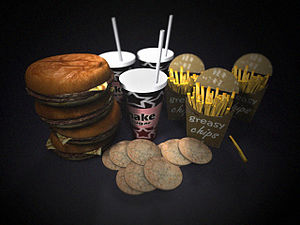As a parent and as a marketing professional, I was very happy to read about Disney’s recent announcement to eliminate the marketing of junk foods on all of its child-focused programming. For those who may have missed the announcement, all food products advertised over Disney’s TV shows, radio and websites will have to meet a new set of nutritional standards. Disney also plans to reduce the amount of sodium in children’s meals served in its theme parks. It’s about time one of the biggest marketers to children recognize a relationship between food advertising and the obesity epidemic among our young people.Unfortunately, Disney didn’t decide to make this change because it was the “right thing to do.” It was all about marketing—strengthening the Disney brand. And, according to Disney Chairman Robert A. Iger, Disney did it because they see a greater consumer demand for more nutritional foods.
Well, at least they weren’t being disingenuous about the reason for the announcement.
Junk food copy (Photo credit: Wikipedia)
Distinguishing between ads and entertainment
While parents no doubt must play a big role in helping their children learn to make healthy choices—whether about food, activities or other things—as a parent, I still feel as if we’re losing the battle to the media marketing machine. Media is everywhere and it seems like children of today are more plugged in than ever before.
By age 10 most kids can distinguish between advertising and entertainment. But that doesn’t mean that kids necessarily understand the intent of advertising. My youngest, now ten, still has difficulty comprehending that the television ads that appear during her much-loved Disney programs are designed to sell and make everything sound like something she really needs. Her latest urging (thanks to a television commercial she saw) was that we needed a Swiffer mop.
As I looked for a mop to clean my parent’s floor recently, our exchange went something like this:
“Mom, we should get a Swiffer.”
“A Swiffer? What do we need that for?”
“For mopping floors…It’s on Disney channel and they work really well. It makes the floor really shiny.”
Obviously it’s not just junk food messages that reach our children—but much of the advertising that children see is related to food.
Kids are bombarded with marketing messages
Advertising reaches our children in more ways than ever before—during online video games, via television product placements, on the radio, during sporting events, on clothing and even in the school cafeteria. They truly are bombarded by a multitude of messages.
According to the Media Education Foundation, the average child in the United States sees about 40,000 television commercials in a year.
My hope is that Disney’s announcement does create a ripple throughout the marketplace. I hope that food producers reformulate their foods to be healthier for all of us, that food labeling becomes easier for everyone to understand, and that marketers ease up on their efforts to make loyal brand followers out of our children. Most of all, I hope that more and more companies will make changes because it is the “right thing to do.”
A little footnote to this post: As recently as Disney announced its new move to stop marketing junk foods to children, FaceBook announced that they are seeking to open up its social platform for children under 13.
So for those keeping score at home, that’s one baby step forward (thank you, Disney), and two steps back (no thanks, FaceBook).
Additional Reading:
Health advocates say Nestle co-branded candy with Girl Scouts violates pledge
Children more susceptible to advertising messages
Junk food still stars in TV ads seen by kids





Disney’s Promise To End Marketing of Junk Foods | Change Conversations http://t.co/oQvPt6Qs